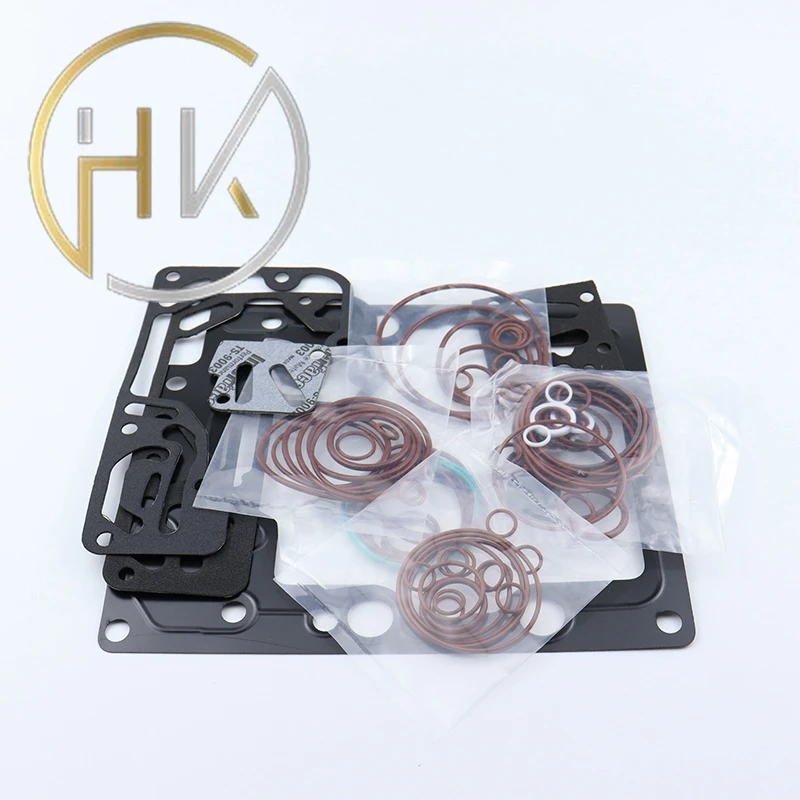des . 04, 2024 18:09 Back to list
scraper seal hydraulic
Understanding Scraper Seal Hydraulics A Comprehensive Guide
In the world of hydraulic systems, the scraper seal plays a vital role in maintaining the efficiency and longevity of machines by preventing fluid leakage and contamination. Understanding the mechanics behind scraper seals and their applications can provide critical insights for engineers and maintenance professionals involved in hydraulic system design and upkeep.
What is a Scraper Seal?
A scraper seal, commonly found in hydraulic cylinders, is a device designed to keep contaminants out of the hydraulic system while allowing the necessary hydraulic fluids to flow freely. Positioned at the exterior of the cylinder, the scraper seal is often made of durable materials such as rubber or polyurethane, which withstand harsh operating environments and mechanical wear. Its primary function is to scrape away dirt, dust, and other debris as the cylinder rod extends and retracts, thereby protecting the internal components of the hydraulic system.
Importance of Scraper Seals in Hydraulic Systems
1. Contamination Prevention One of the most critical functions of scraper seals is to prevent contaminants from entering the hydraulic system. Contamination can severely affect system performance, leading to premature wear, overheating, and even catastrophic failure.
2. Maintaining Fluid Integrity Hydraulic fluids are designed to perform specific functions, including lubrication and heat transfer. Scraper seals help maintain the integrity of these fluids by preventing the ingress of harmful substances.
3. Enhanced System Longevity By acting as a barrier against environmental threats, scraper seals contribute to the longevity of hydraulic components. This is particularly important in heavy-duty applications where equipment is often subjected to intense operating conditions.
4. Cost Efficiency Reducing maintenance costs is a significant advantage of utilizing effective scraper seals. By preventing leaks and minimizing wear, the life expectancy of hydraulic machinery is extended, leading to lower replacement and repair costs.
Types of Scraper Seals
Scraper seals come in various designs, tailored to meet specific operational requirements. Here are a few common types
- Single Edge Scrapers Simple and effective, these scrapers have one edge that faces outward and removes contaminants from the rod as it moves in and out of the cylinder.
scraper seal hydraulic

- Double Edge Scrapers These seals have two scraping edges for enhanced capability, offering improved contamination control, especially in more demanding applications
.- V-Rings Although not traditional scraper seals, V-rings can be used to protect against dust and dirt while providing axial sealing.
- U-Cups These seals can serve dual purposes, acting as both a scraper and a main sealing component within hydraulic cylinders.
Selecting the Right Scraper Seal
Choosing the appropriate scraper seal requires consideration of several factors
1. Operating Environment Examine the conditions in which the hydraulic system operates, including temperature fluctuations and the presence of abrasive materials.
2. Fluid Type Different hydraulic fluids can interact differently with seal materials. It is essential to choose a seal that is compatible with the hydraulic fluid in use.
3. Rod Diameter and Stroke Length The size and stroke length of the hydraulic cylinder will determine the dimensions and design of the scraper seal needed.
4. Wear Resistance In applications with high wear potential, selecting seals made from more durable materials can enhance the lifespan of the hydraulic system.
Maintenance and Best Practices
While scraper seals are designed to protect hydraulic systems, they require proper maintenance to perform optimally. Regular inspections can help identify signs of wear or damage, allowing for timely replacement. Ensuring that the hydraulic rods remain clean before operation can also reduce the risk of excessive wear on the scraper seals.
In conclusion, scraper seals are an indispensable component of hydraulic systems, serving to protect against contamination, maintain fluid integrity, and enhance operational efficiency. By understanding their role and selecting the appropriate type for specific applications, engineers can significantly improve the reliability and performance of hydraulic machinery. As industries continue to evolve and demand greater efficiency, the importance of reliable scraper seals will remain paramount in the realm of hydraulics.
-
TCN Oil Seal Metal Ring Reinforcement for Heavy Machinery
NewsJul.25,2025
-
Rotary Lip Seal Spring-Loaded Design for High-Speed Applications
NewsJul.25,2025
-
Hydraulic Cylinder Seals Polyurethane Material for High-Impact Jobs
NewsJul.25,2025
-
High Pressure Oil Seal Polyurethane Coating Wear Resistance
NewsJul.25,2025
-
Dust Proof Seal Double Lip Design for Construction Equipment
NewsJul.25,2025
-
Hub Seal Polyurethane Wear Resistance in Agricultural Vehicles
NewsJul.25,2025
-
The Trans-formative Journey of Wheel Hub Oil Seals
NewsJun.06,2025
Products categories
















